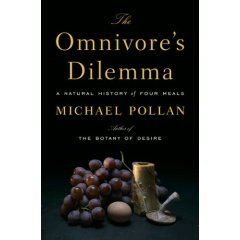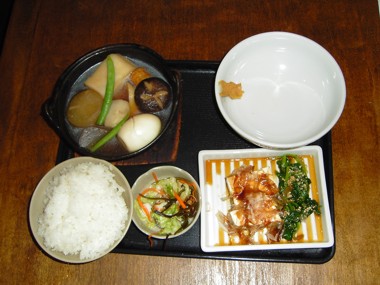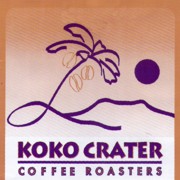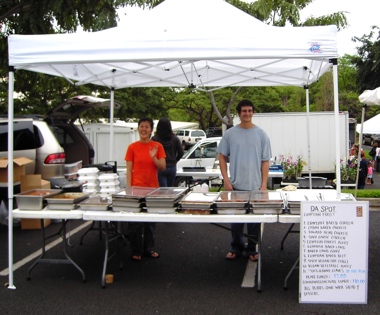

|
Local Hawaii ingredients used with an international flair^BNanette^K^H (Gone but not forgotten) 1946-2020 Email: nanette@freerangegourmet.com Friday, April 28, 2006A manifesto for a Free Range Gourmet This guy makes so much sense. The best thing I can do is quote a few snippets for you to read. This guy makes so much sense. The best thing I can do is quote a few snippets for you to read.When you think about it, it is odd that something as important to our health and general well-being as food is so often sold strictly on the basis of price. Look at any supermarket ad in the newspaper and all you will find in it are quantities—pounds and dollars; qualities of any kind are nowhere to be found. . . .Yes! Read an excerpt from Michael Pollan's new book, The Omnivore's Dilemma: A Natural History of Four Meals in the June issue of Mother Jones, or here on the web, or click on the image above to get your own copy from Amazon. Update: another interesting review of this book by Gordon Morash in today's Toronto Globe and Mail is here. Friday, April 21, 2006Joan Namkoong's new book found at Costco This may be the ultimate guide to good dining in Honolulu. And Costco Iwilei has a stack of them at $8.99 each. This may be the ultimate guide to good dining in Honolulu. And Costco Iwilei has a stack of them at $8.99 each.Of course, Free Range Gourmet readers will immediately drive over there to buy not one, but two of them (one for the car of course). Don't blame me if Costco runs out. You can also click on the picture and get one from Amazon.com for $14.95. Buy two or more and shipping is free. But be quick there too--Amazon is also selling out. This book is 192 pages of concentrated information and you have to have it. Published April 1, just days ago, it is both complete and completely up-to-date. Joan lists restaurants with hours and phone numbers, markets, small shops and eateries, food and wine sources and food lore of the islands. The book is printed locally by Bess Press and is profusely illustrated. Joan explains and illustrates everything you need to know about local veggies, fish and other foodstuffs. Ok, I just thought of why you should buy three copies, not two. When relatives come to Hawaii, you're not going to want to loan out your dogeared and annotated copy. And if you give them one of their own, they'll be able to manage by themselves for the rest of their trip. Who knows, they might even invite you out to dinner at one of Joan's recommended places. Tags: Saturday, April 15, 2006Mad cow, bird flu: the cause seems to be greed
It's only greed that causes mad cow disease: greed that makes a cow eat parts of other dead cows instead of grazing on grass, as cows were meant to do (why aren't religious fanatics objecting to meddling with this intelligent design?). Now a study by the non-governmental organization GRAIN Fowl play: The poultry industry's central role in the bird flu crisis blames the spread of avian flu on the intense confinement of factory poultry farms that allowed the virus to mutate and spread.
The study casts doubt on the theory that the disease travels along migratory bird routes. Instead, it found that avian influenza is spread along poultry trade routes, where meat, eggs, poultry, manure and other chicken products pass through. Avian flu has not yet spread to Hawaii. We seem poised to blame it on the poor kolea, which will mingle with other migratory birds during its summer in Alaska (see, for example, Bob Krauss' April 9 column Migratory kolea face avian flu challenge). When I read that article I was wondering how the little sick birds would be able to fly back here over the vast distance. But what do I know about these things. The study challenges the popular wisdom, though. It won't be kokea transmitting the disease to the rooster pecking around your yard, if the study is correct. Still, it's wise to take precautions. A March 20 story Hawai'i in bird flu's path also picked on the kolea (plover): If avian influenza spreads to Hawai'i, it likely will arrive on the wings of a Pacific golden plover or some other migratory bird returning from arctic nesting grounds.Certainly, if factory farm conditions favor not only the spread and mutation of the disease, we should be looking at closing any factory farms that might breed the microbe. But will we? Probably not, that's where the greed kicks in. I don't know what chicken farming is like in Hawaii. If there are intensive factory farms here, now may be the time to let the birds loose. Tags: Thursday, April 13, 2006Try oden at a reasonable price One day we will get to Hakkei, especially after reading the review and comments over at One day we will get to Hakkei, especially after reading the review and comments over at`ono kine grindz. In the meantime, we enjoyed our oden at Jimbo, a very popular udon restaurant on S. King Street. Oden is available there at reasonable prices: $9.80 for oden alone, or $13.90 for an oden teishoku (set course). These are available for dinner only, Thursday through Saturday evenings. The picture is the oden teishoku. In the white bowl is a little bit of mustard. Oden is comfort food for us. It is available in Japan at very reasonable cost at street stands and tiny little eating places of all sorts, and since we left Japan, at convenience stores. On a cold night it's easy to find a tiny place to wedge into (thereby helping to keep warm) and choose little boiling things to have out of the large bowl of broth. As items are taken out for you, new ones are put in, and the whole thing keeps going all evening. Besides the tight crowd of customers and the simmering broth, the hot sake helps keep away the chill and livens up the conversation. Staggering home afterwards, one is oblivious to the cold wind and rain. Jimbo Restaurant 1936 S. King Street Honolulu, HI 96826 Lunch: 11:00-2:50 pm 7 days Dinner: 5:00-9:30 pm Sunday-Thursday, 5:00-10:30 pm Friday-Saturday (808) 947-2211 Tags: Tuesday, April 11, 2006Recognition for Koko Crater coffee and our favorite wine I love it when some product that I use is recognized as the "best" by Consumer Reports or other authority. Of course, I hate it when I learn that something else I've selected is a lemon, the thing that everyone on Amazon.com is giving negative reviews. I love it when some product that I use is recognized as the "best" by Consumer Reports or other authority. Of course, I hate it when I learn that something else I've selected is a lemon, the thing that everyone on Amazon.com is giving negative reviews.I felt validated twice last week. The first time was when I learned that Koko Crater Coffee Roasters made Honolulu Magazine's "Best of Honolulu" edition. We buy our espresso beans from them at the KCC Saturday Farmers Market and have even suggested to the Grand Café that they might improve their coffee by switching to Koko Crater (no go on that, they're happy with what passes for coffee in their air pots). The second revelation blew my mind. When we lived in Japan I used to travel frequently to Australia, and each trip I would bring back a dozen or more bottles of Australian wine. It was quite a learning experience since Australian wines weren't very well known then. Among the dozen were often a few of our favorites, including Henschke Hill of Grace. So at one of the twice-weekly HASR wine tastings we often go to, I wandered off with my glass in hand to look at what was on the shelves. There were several bottles from Henschke so I was reminded of our old favorite, Hill of Grace. But there was none to be found. Even on my third trip around I couldn't find any (it's a guy thing). So I asked. It turns out that this beloved wine now goes for $350 or so a bottle, and Hawaii is allocated exactly one (count 'em, one) bottle a year. Well, I feel validated in my good taste, but disappointed that I'll never taste it again. Sheesh. Tags: Saturday, April 08, 2006Da Spot at KCC Farmers Market We've been buying our Saturday night dinners at KCC Farmers Market. Yes, this is da place to grab something from one of the 11 or so trays that Ako Kifuji and Ahmad Ramadan have brought from their McCully restaurant. We've been buying our Saturday night dinners at KCC Farmers Market. Yes, this is da place to grab something from one of the 11 or so trays that Ako Kifuji and Ahmad Ramadan have brought from their McCully restaurant.Let's see... Egyptian Baked Chicken (one of our favorites), Cajun Baked Chicken, Tomato Baked Chicken, Spicy Garlic Chicken, Baked Lamb Curry, Egyptian Baked Lamb, and more, more, more! We take home one dish and buy an extra dessert. There's plenty for two. We add some more salad from the fridge and we have a tasty dinner. Of course, you could buy two different dishes and have both for dinner for four. Tags: Monday, April 03, 2006Rain ruins crops too: Newspapers please notice The papers had some remarkable photos of flooded streets and damaged homes, but little on the devastation caused by the 40+ days of often heavy rain on Hawaii's farms and farmers. Many crops are wiped out not just for the present, but for the medium-term future. The papers had some remarkable photos of flooded streets and damaged homes, but little on the devastation caused by the 40+ days of often heavy rain on Hawaii's farms and farmers. Many crops are wiped out not just for the present, but for the medium-term future.One farmer who showed up at the KCC Farmers Market this weekend (some had nothing to bring, they didn't come...) said that the entire papaya crop was not only ruined, but the trees drowned. Before there will be new papayas available for sale new trees will have to be planted and raised. Many farmers brought what they had to the market. I hope shoppers will continue to attend and support our farmers by buying what they have available. If there is kale, please eat some kale. Buy local first, before visiting the supermarkets. Help the farmers recover--don't give up on the markets. And to our "traditional" media: please go out there and get the stories that are not urban, not about houses and streets, not about disappointed tourists, but about the losses farmers incur when weather like this strikes, and how they struggle to clean up, plant again, and do it all over again. Tags: |
Email: nanette@freerangegourmet.com Twitter: @freerangenan Search this site Do you want to receive an email whenever this page changes?
RSS News Feed
How do you read news feeds? Click
here for some information. Market News
Official web pages and Tip Sheets for Saturday morning KCC Farmers' Market, Wednesday night Honolulu Market, Sunday morning Mililani Market, and Thursday Night Kailua Market Resources
Slow Food You've read about the world-wide slow food movement. Hawaii has an
active
Slow Food group. Learn about or join
Slow Food USA at the
Slow Food USA website.
Where we're Eating
Town Olive Tree Cafe
More Links
Archive

|
|||
Contact the webmaster: webmaster@freerangegourmet.com